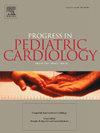Transition to a non-invasive rejection surveillance protocol with donor-derived cell-free DNA in pediatric heart transplant recipients
IF 0.6
Q4 PEDIATRICS
引用次数: 0
Abstract
Background
While endomyocardial biopsy (EMB) remains the gold standard for detection of acute allograft rejection (AR), its limitations have led many pediatric programs to utilize adjunctive non-invasive methods of rejection surveillance.
Objectives
This study compares the procedural burden, detection of AR, and severity of AR episodes between an EMB-based protocol and a surveillance protocol utilizing donor-derived cell free DNA (dd-cfDNA).
Methods
Patients who underwent orthotopic heart transplantation (OHT) before age 18 followed at our center from 2019 to 2023 were retrospectively reviewed. Two protocols and time periods were compared: Era 1 (01/2019–03/2020, EMB-based) and Era 2 (07/2022–06/2023, dd-cfDNA based). Patients with multi-organ transplants, post-transplant lymphoproliferative disorder, and bone marrow transplants were excluded.
Results
Biopsies, anesthesia, and intubations had a statistically significant decrease in Era 2, with a 46 % reduction in biopsies per patient-year in Era 2. When screening with dd-cfDNA in Era 2, there was a significant increase in the number of positive EMB (32/312, 10.1 %), compared to 19/719 (2.6 %) positive EMB found in Era 1 (p < 0.001). Cases of rejection were significantly more likely to be associated with a positive EMB (72.9 % in Era 2 vs. 45.9 % in Era 1) and less likely to present as clinical rejection (p = 0.017).
Conclusion
dd-cfDNA surveillance is associated with a significant decrease in surveillance EMB and related procedures without a change in clinical allograft rejection. Our limited experience suggests that integrating dd-cfDNA may also lead to earlier detection and lesser severity of rejection in pediatric populations.
求助全文
约1分钟内获得全文
求助全文
来源期刊

PROGRESS IN PEDIATRIC CARDIOLOGY
PEDIATRICS-
CiteScore
0.90
自引率
11.10%
发文量
69
审稿时长
75 days
期刊介绍:
Progress in Pediatric Cardiology is an international journal of review presenting information and experienced opinion of importance in the understanding and management of cardiovascular diseases in children. Each issue is prepared by one or more Guest Editors and reviews a single subject, allowing for comprehensive presentations of complex, multifaceted or rapidly changing topics of clinical and investigative interest.
 求助内容:
求助内容: 应助结果提醒方式:
应助结果提醒方式:


